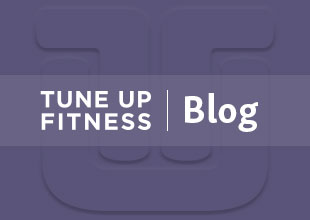
Every morning, millions of North Americans step onto their yoga mats to salute the sun. The sun salutation, in all of its many forms, is a gorgeous moving ritual that effectively warms the body, lubricates and strengthens the joints, lengthens muscles, and fills the body with breath. Yet, despite its many benefits, most if not all sun salutation sequences are fraught with potential pitfalls for both new and experienced yogis alike.
The issues stem from the simple fact that sun salutations are done relatively fast and frequently. The impeccable alignment of breath and movement during each sun salutation (known as vinyasa in yoga circles) means we rarely linger in its individual poses. We inhale, sweep arms overhead; exhale, swan dive over to fold; inhale, come to flat back; and so on—and that doesn’t leave a whole lot of time for detailed alignment instructions or careful proprioception. Add to this the fact that the same sequence is repeated over and over again and you have the perfect conditions for practicing on autopilot. In fact, experienced practitioners may be even more prone to chronic injury from habitual movements and deeply entrenched body blind spots.
Although the first movement of most sun salutation sequences—the reach of arms overhead to a pose called urdhva hastasana—may seem simple enough, it can spell trouble for your shoulders if done without awareness. Called yogi’s shoulder, painful arc syndrome, impingement syndrome, or just a rotator cuff injury, the symptoms can include shoulder aches, pain when raising the arm out to the side or in front of the body, discomfort when lying on the affected shoulder and a sharp pain when reaching into your back pocket.
The four rotator cuff muscles work to support the shoulder joint by stabilizing the head of the upper arm bone in the shoulder socket as the arm moves through space. The position of one of these muscles, the supraspinatus, and its tendon is particularly important because it is sandwiched between two bones (the edge of the scapula and the head of the upper arm bone) and is quite easily pinched when the arm is lifted a certain way. Do this enough and the tendon becomes irritated, inflamed and possibly even frayed or torn.
The good news is this can all be avoided by simply: (a) pulling down the upper arm bones down to sit more squarely in their sockets; and (b) rotating them externally before sweeping the arms overhead. The palms will turn gracefully skyward as you lead the way upwards with your pinky fingers.
Note that external rotation of the upper arm bones looks different when the arms are down by your sides and when your arms are reaching overhead. To train external rotation with arms down, try Pin the Arms on the Yogi. To train external rotation with the arms overhead, try Holy Cow at Trough. By strengthening your rotator cuff muscles, these Yoga Tune Up® exercises will protect your shoulders and bring longevity to your practice.
Discover the YTU neck pain relief solutions
Watch the QuickFix Online Neck Video
Learn about the YTU Pose of the Week


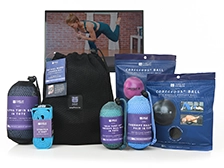
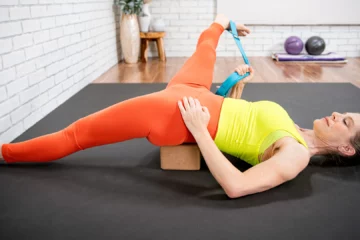
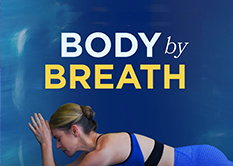
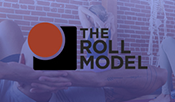
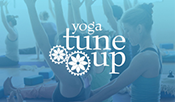


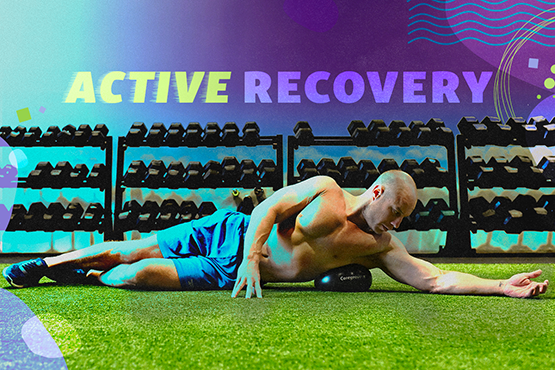
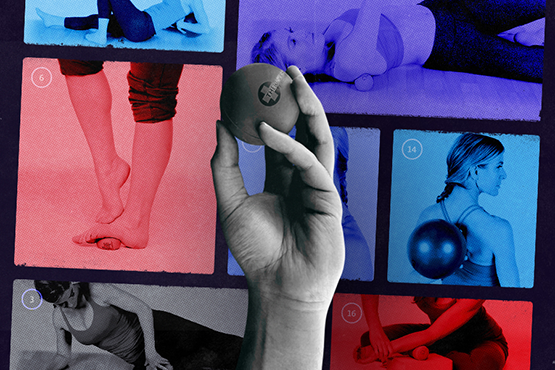
More urdvha hastasana (with the better alignment you’ve suggested!). We spend so little time as grown ups with our arms overhead. I love Katy Bowman’s reminder that every time I walk through a doorway to try to remember to reach the arms up overhead.
I love learning more about the shoulders, and how to gracefully unleash discomfort in all directions, so I will be definitely trying the Holy Cow at Trough with arms externally rotated overhead and slowing down my practice. Thanks for the post!
I am thankful to my ashtanga practice days for showing me that indeed, I had shoulder problems (pre-existing, I think, from activities or non-activity). Who knew! Nothing else required me to reach overhead or do so much weight bearing on my upper extremities. With newfound awareness and some encounters with excellent PTs and more mindfulness in my practice, my shoulder is stronger. Now YTU poses and therapy balls will take me further to shoulder wellness!
Since i did my teacher training, i am looking a lot differently at my regular vinyasa and trying not to be on ‘autopilot’ when i execute them!! This makes a lot of sense!
Interesting points about sun salutations.i think we rely on them too much.reducing the number you do in a class and slowing them down to focus on form and options will make you a better teacher.when I did this ,there was time to explore other movements and poses.
Thank you so much for this post for the shoulders. As a chronic shoulder pain sufferer due to decades of patient care, this is incredibly helpful. I try to “live in external rotation” after long days spent in internal and this information is very valuable for desiring longevity in one’s practice.
Thanks YuMee,
I often wonder if repetitive motion from the 1000’s of sun salutations is going to cause me problems over time. Usually I attribute my shoulder problems from performing chaturanga , but now I will bring more awareness to how I perform urdhva hastasana and see if my problems don’t begin there.
Thank you!!! I love my sun salutes and teach them in almost every class. It is a great reminder to perhaps take students through poses that brings the awareness of the external rotation in the shoulders or to start with just the movement of the arms connected to breath for a few slow cycles.
Thanks for the reminder about auto pilot and the importance to practice with awareness to avoid impingment in the the supraspinatus.
Thank you for this article! I teach and practice Power Vinyasa Yoga, so there are a lot of sun salutations that move fast (one breath, one movement). It’s wise to remind our students (and ourselves) to externally rotate the arms while lifting them up to the sky in urdhva hastasana. Simple, yet powerful “fix” that will save our shoulders in the long run…now if people could just properly access their serratus anterior and lats during Chatarunga, all would be perfect 🙂
Thank you for this article on the importance of practicing with awareness and not on auto-pilot. I am at YTU training right now and hope we are going to learn Holy Cow at the Trough!
Slow, mindful, intention-based, and alignment-rich movements are what lend to the longevity of a practice. “Pulling down the upper arms bones to sit more squarely in their sockets”, and “rotating [the arms] externally before sweeping the arms overhead” are great tips to save the shoulder girdle! I also like the comment of bringing the ‘prayer hands’ “briefly behind the head while folding to encourage external rotation and flexion of the shoulder” while folding into uttanasana…I’m totally implementing this into my own practice to raise the bar of integration and awareness!
Thanks YuMee!!
I do tons of sun salutations in my classes- arms over is huge and I NEVER cue them to externally rotate before taking the arms up over head. Huge help cuing that and depression of the shoulders taking them square into the sockets.
Yes! Something as simple as lifting the arms a certain way in yoga (and then all the time when we’re off our mats) can cause horrible chronic injury and pain. Teaching a safer option for lifting the arms in sun salutations is such a great way for us to repattern this motion for when we’re reaching up that bowl on the top shelf or pinning towels to the clothes line. All our movements matter!
I never really paid attention to how the shoulder felt when just lifting my arms overhead. When I compared it to actually externally rotating first then lifting it was obvious that this is a game changer!
Just talked about this two days ago in our Yoga Tune Up training! I’ve never had a shoulder issue before, but I know what to do now in my sun salutations to avoid the issue! I’ll also be cueing retracting the shoulders and externally rotating them before raising the arms to the sky.
Thank you, it is so true we all need to watch our form. I have torn all of my rotators, in my left shoulder. It is very hard for me to move fast in salutations. This has kept me out of that type of class, want to keep up but not injure myself. Thank you for your educated knowledge on the subject. Very insiteful.
Thanks YuMee! This was a great article! I had inflamed rotator cuffs when I started practicing yoga and chatarungas were out of the question. Now, after focusing on externally rotating my shoulders and massaging my rotator cuffs with my YTU balls (which makes me talk to G-d!) my shoulders feel much better. I would love you to write a chatarunga break-down article. Almost half way through my level 1 YTU training, I am thinking that protracting and depressing the shoulders, and practicing Body Surfing would help keep my back and shoulders strong and aligned.
I love the reminder to go slower and mindfully during sun salutations. I often do not cue arm rotation during sun sals and it was a good reminder to remind students of the importance of external rotation when arms are over the head to avoid impingement.
Thank you YuMee.
I appreciate learning that the shoulder blades move up in external rotation and flexion of the arms. It’s often cued as draw the shoulder blades together and down the back when you lift the arms up. Holy cow at the trough has been a great exercise to teach awareness of the position of the shoulder and the muscles of that are engaged in rotation and flexion of the shoulders.
These are such great tips – especially for yogis who lift repetitively lift their arms overhead. Holy Cow at the Trough is one of my favorite YTU exercises – it is such a powerful strengthener for those external rotators (and is usually super hard for most people). Thanks for these great reminders!
YuMee, Im not a regular yogi but these same issues are prevalent in other spaces. I work at a place that requires physical fitness and high volume calisthenics is one of the go to means of conditioning. Often we see the same issues with the shoulder. Thousands of pushups and pull-ups breads complacency and these “simple” movements are often neglected when it comes to focus on proper form.
This rings so true for me! I am so happy to be training with Jill even after only 3 days I feel like my knowledge of alignment and proper body mechanics has improved immensely! One of the things that you mentioned here that really ‘woke’ me up was how external rotation is sooooo important! Thanks for the great article!!
Wow, thank you for the reminder that when we move from awareness to rote, what was once new and mindfully executed as a beginner suddenly becomes mindless and injurious. Holy cow at the trough sheds a whole new light on getting my arms over my head properly during sun salutations.
Thank you, YuMee-ji, for pointing out the importance to not practicing on auto-pilot. Such a simple movement, seen in so many poses, when done with awareness, can lead to countless years of happy shoulders.
I love teaching slow flow. I spent much of my first years of yoga doing sun salutation after sun salutation and I know exactly what shoulder syndrome you are talking about. Thank you for the details of the different ways external rotation looks like depending on the orientation of the arms. I have been doing Pin the Arms on the Yogi and my students and myself included can’t believe how beneficial that is to feel the shoulder joint externally rotate and the upper back and scapula strength. I will now bring it Holy Cow at the trough.
Yumee, I love you! I need to get to one of your workshops soon. I love that you addressed that external rotation looks different when the arms are up compared to down…. it’s something I always over think and end up confusing myself.
YuMee, I appreciate what you added in your comment above about the upward rotation of the shoulder blades when reaching the arms up. I was always told to pull my shoulder blades down in yoga, and thought that’s what I was supposed to do when I reach my arms overhead. It caused me a lot of grief in the long run! I’ve had to relearn how to properly track my scapulae. I wish I’d taken an interest in anatomy and alignment sooner. Now I have a profound appreciation for precise cues about pose alignment.
YuMee. Thanks for speaking out. We both (my friend Louis and I) now teach slow-motion sun salutations after taking YTU level 1. You can never have too much awareness how to position the shoulder even before putting the weight on it.
Thank you for this article! Ever since completing YTU Level 1 a few short weeks ago, I am totally re-thinking how I practice and teach sun salutations. Love the idea of incorporating Pin the Arms on the Yogi and Holy cow at the Trough to encourage external rotation and a healthy rotator cuff. Lately, I have been re-framing sequences to include fewer sun salutes ad more YTU poses.
You’re absolutely correct, Yvonne–Pin the Arms on the Yogi is designed to teach the shoulders how to externally rotate while the arms are down by our sides. It’s actually quite a lot of work–whew! As we lift the arms towards urdhva hastasana, the palms do face upwards, to encourage external rotation (and to discourage impingement of the supraspinatus tendon). It’s worth mentioning that this movement is ideally supported by the upward rotation and protraction of the shoulder blades, which enhances shoulder integration and stability. Good form here will translate into happier downward dogs and sweeter handstands!
Can someone breakdown Pin the Arms on the Yogi? It appears that while standing the shoulders are in external rotation. As the arms rise up overheard are the palms facing upward so the shoulers remain externally rotated?
This message is a great reminder that if you practice the same pose over and over, you easily forget to pay attention to which muscle you are focusing on. As you mention to become an “autopilot”! I was externally rotating my arms when flexing shoulders without thinking, but if it’s a new pose I would have pay more attention to what’s going on my body. Thank you for your suggestion.
I’m personally a big fan of bringing the prayer down through the centre line of the body as I fold over into uttanasana. It reminds me to stay engaged and integrated. I’ve also been known to bring the prayer briefly behind the head while folding to encourage external rotation and flexion of the shoulder.
This was a great article! I love sun salutations but have also heard of many yogi’s having shoulder issues.I like the tips you gave and even tried them out at my house. I’m wondering what your thoughts are of instead of the swan dive down, if it would be more beneficial over the long run to have the palms stay touching and come down through the centre line of the body? Either way though, I will definitely make sure that I do not go through my sun saluts in auto-pilot and keep the shoulders externally rotated!
Excellent suggestions for exercises to overcome external rotation blind spots! I find it so hard to explain to people why doing the same movements over and over in poor form is what is causing their pain, if only we could convince them before the pain manifests!
The continual reminder to externally rotate the upper arms as we come into flexion of both shoulders is as with everything else, that we are miindfully moving with awareness and intent!!
Thanks Yumee
This was a great article – the last year or so, I have been focusing on pushing into the floor during down dog and handstand, and other arm balances while maintaining correct alignment in shoulders i.e. depression and it has really healed a long term shoulder injury. Off to do some pranic bathing.
Fortunately, I was taught to lead with my palms up when raising my arms but I also was taught to lead with my palms down when lowering my arms. I wonder if someone could comment on whether that is a problem? The importance of anchoring the arm into the shoulder on all lengthening movements of the arm can not be over emphasized in the prevention of rotator cuff .
I am new to Yoga Tune Up and a relatively new yoga teacher, but I do experience intense sensations in my shoulders on a regular basis. I do not know the exercises you mentioned, but am now eager to learn, as I have feared wincing while teaching salutations. I have learned to modify by placing the back of my hands together to rotate shoulders out for mountain or warrior, but this can not work for sun salutation’s urdvha hastasana. I am on a quest to learn these new exercises to help train my external rotation and then to help train my students.
Learned something new! Thanks for the great tip in injury prevention! Very useful!!
Jill breaking down the downward dog has been a big WOW, I will definately have my students in the next Vinyasa class try the ‘cast the elbow’ movement and see if they can keep the external rotation of the upper arm and turn the palm down flat. There are going to be a few more Dolpin poses in my classes, if that means breaking up the Vinyasa sequense so be, reason I am taking this YTU level 1 is to learn more about anatomy as my concern has alwasy been with my students safety and their enjoyment and able to leave a class feeling better then when they arrived. Thank you Jill.
Recently we did (at least attempted to do) 108 sun salutations for a charity event. Subconsciously perhaps, I externally rotated my shoulders as I had no shoulder pain. I did experience pain in my wrist during adho mukh svansan ( downward facing dog) by the 70th sun salutation.
I never thought about externally rotaing the shoulders before raising the arms. I do find that I’m on autopilot during the sun salutes, this will be a fun new excercise to do with the students in class!
In my opinion sun salutations ARE strutctured to be repetitive to train your brain to be Present the moment of what you are doing. Regardless of how many times you have done it…5 or the 575th time. The excercises you explained are wonderful tools to keep your mind focused on proper alignment.
Great post! Being mindful of our postural alignment is so important……and is even more so when practicing a series of postures through which we move quickly and repetitively. One (of the many) things I love about Yoga Tune Up is the breakdown of the components of an asana to the “nuts and bolts” of it while examining the how and the why of the posture or exercise….just as you’ve done here with regard to shoulder alignment during urdvha hastasana. I love pin the arms on the yogi and find holy cow at the trough to be a challenging, yet effective tool to educate the shoulders to externally rotate. Great information to embody and share. Thank you!
We learned Pin the Arms on the Yogi in class the other day, which felt amazing, I am now eager to learn Holy Cow at the Trough. For such a long time, without even realizing it, I did pretty much all shoulder flexion poses with my shoulders shrugged up to my ears. Until a physical therapist pointed out to me what I was doing, I really had no idea. I know this shoulder position has caused many of the shoulder issues that I struggle with on a daily basis. In becoming aware of how I was moving in yoga, I also became of aware of the fact that I basically spent my entire life performing all activities with my shoulders hunched up to my ears. Now, on a daily basis, I concentrate on keeping my shoulders down. I am hyper aware of doing so in yoga (even though I still struggle with actually doing so — habits are so hard to break). What I haven’t so much focused on is the external rotation of the shoulders during extension. This I will definitely want to try, hence the intrigue in regard to Holy Cow.
Good article thanks for posting. I’m noticing more and more it’s not just students who are suffering from shoulder cuff issues in Flow classes but even more it’s teachers suffering who are coming into incorrect alignment themselves over and over in their practice and it’s so important to slow down plug back into the life force and allow a healthy awareness to arise again.
As someone who has suffered with rotator cuff injuries I found this article very interesting. Slowing down and being more mindful in sun salutes has been extremely helpful. Working on Pin the Arms on the Yogi the other day in class was helpful, as well. I look forward to learning Holy Cow at the Trough!
Definitely an article that all yogis should read! I had no clue that there could be so many things that can go wrong with a simple (well, I thought simple) movement of the arms overhead. This really shows that every movement in a vinyasa needs to be done with accuracy and attention to detail. I also like the solutions/prevention techniques given at the end of the post.
This is so important for us to constantly remember and remind ourselves and our students to continue to move consciously, especially through poses we know so well and do so often. I also like pin the arms on the yogi and pranic bath as ways to warm up the shoulders and bring better understanding of external rotation. Thanks for a great post.
Thanks for the reminder. As a teacher of flow, I see how many students move through Sun Salutations almost on auto-pilot and are increasing their risk for shoulder injuries. Few people notice how simply reaching the arms up over head can put a lot of strain on the supraspinatus. With some direct cuing, teachers can help students avoid injury but also call students back into their bodies and stay present throughout the entire practice.
Thanks for the post so helpful to bring YTU poses into flow classes as this style of yoga is becoming increasingly popular. It also serves as a great reminder to have anatomically correct tadasana to help with externally rotating the shoulders as place to drive this home along with holy cow at the trough and pin the tail on the yogi. I also notice often times many people bend from their waist vs. their hips and lose spinal extension when coming through to utanasana. It seems helpful to go through the first sun salutation in a slow manner to give the reminder of proper alignment during sun salutations. In vinyasa it can be easy at times to tune out of your alignment if you practice regularly and I will definitely bring this concept to my next vinyasa class. Thanks again!
As a student and teacher who has shoulder issues, I appreciate the attention to detail in your breakdown of Urdvha Hastasana. I hope it will give other teachers an important cue to help their students keep their shoulders safe.
[…] article originally appeared on the Yoga Tune-Up Blog. Share this:TwitterFacebookLike this:LikeBe the first to like […]
I think that this article has valid points regarding injury. It is indeed true that experienced professionals sometimes take their knowledge and abilities for granted and often hurt themselves. It is important as an instructor to be aware of the motions that are happening in the shoulder joint and bring this awareness to your students. As a professional when you are aware of what musces create what joint actions, in this case the shoulder joint you can bring safe solutions into your classroom. The supraspinatus assists the arm when it is lifted away from the body. When we train the supraspinatus to engage correctly we can prevent injury through enabling it to go through its correct range of motion. So whether or not we are performing an action fast or slow, training the muscle and joint to work properly will reduce injury probablity.
Wonderful article! I like to include pranic bath and raise the chalice in my opening/warm up sequence to get the shoulders warmed up and teach the actions they will need throughout the sun salutation. I also show them the difference between internal and external rotation while they are in pin the arms on the yogi.
When ever I sub a class that is prone to sun salutes I always break the sequence down slowly first and I have found that the Pin the Arms on the Yogi exercise really helps to get my student brains on board!